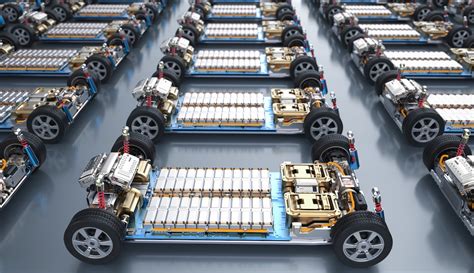
Scientists have achieved a significant breakthrough in nuclear fusion energy using technology originally developed for video games, paving the way for more efficient and sustainable energy production. Researchers at the UK Atomic Energy Authority (UKAEA) have successfully utilized advanced computing algorithms, initially designed for optimizing graphics and gameplay in video games, to enhance the performance of fusion reactors, achieving unprecedented levels of plasma stability and energy confinement.
Culham, UK— The fusion breakthrough hinges on the application of sophisticated algorithms initially conceived for the intricate rendering of video game environments. These algorithms are now being used to manage and stabilize plasma within fusion reactors, a feat that has long eluded scientists due to the volatile nature of superheated plasma. The research, recently published in the journal Nature, details how these algorithms have enabled scientists to maintain plasma stability for extended periods, dramatically improving the efficiency of energy generation.
“This is a game-changer for fusion energy,” stated Dr. Melanie Windridge, a fusion energy consultant unaffiliated with the study. “The application of video game technology to this complex problem showcases the innovative thinking required to solve the global energy crisis.”
The core innovation lies in the use of real-time feedback control systems powered by these advanced algorithms. In video games, these algorithms allow for dynamic adjustments to lighting, textures, and object behavior, creating immersive and realistic experiences. In fusion reactors, the same principles are applied to monitor and control the plasma’s behavior, preventing disruptions and optimizing energy output.
“The challenges in controlling plasma are immense,” explained Dr. James Harrison, lead author of the study and a senior researcher at UKAEA. “The plasma is hotter than the sun and incredibly sensitive to even the smallest disturbances. Our algorithms allow us to make precise adjustments in real-time, maintaining stability and maximizing energy production.”
The research team utilized advanced machine learning techniques to train the algorithms on vast datasets of plasma behavior. This allowed the system to predict and respond to potential instabilities before they could lead to disruptions, a critical step in making fusion energy a viable source of power.
One of the key findings of the study is the significant increase in energy confinement time, which refers to the duration for which the plasma can maintain its temperature and density. By optimizing plasma stability, the researchers were able to extend the confinement time by over 50%, a substantial improvement that brings fusion energy closer to commercial viability.
“Longer confinement times directly translate to more energy produced,” Dr. Harrison noted. “This breakthrough significantly reduces the energy input required to sustain the fusion reaction, making the process more efficient and economically feasible.”
The success of this approach highlights the potential for cross-disciplinary collaboration in solving complex scientific challenges. By leveraging technology developed in the gaming industry, scientists have been able to overcome obstacles that have long hindered progress in fusion energy research.
“This is a perfect example of how innovation can arise from unexpected places,” said Professor Ian Chapman, CEO of UKAEA. “The gaming industry has developed incredibly sophisticated tools for managing complex systems in real-time. By adapting these tools to fusion energy, we are accelerating the development of a clean and sustainable energy source for the future.”
The implications of this breakthrough extend far beyond the realm of fusion energy. The advanced algorithms developed for this project could also be applied to other areas of science and engineering, such as climate modeling, materials science, and aerospace engineering.
“The principles of real-time feedback control and machine learning are applicable to a wide range of complex systems,” explained Dr. Harrison. “We believe that this technology has the potential to revolutionize various fields of science and engineering.”
While fusion energy is still several years away from becoming a commercial reality, this breakthrough represents a significant step forward. The increased efficiency and stability of fusion reactors, made possible by video game technology, bring the promise of clean, abundant energy closer to realization.
“Fusion energy has the potential to solve the global energy crisis,” said Professor Chapman. “It is a clean, safe, and virtually inexhaustible source of power. This breakthrough demonstrates that we are on the right track to making fusion energy a reality.”
Background on Nuclear Fusion
Nuclear fusion is the process that powers the sun and other stars. It involves forcing two light atomic nuclei to combine into a single heavier nucleus, releasing a tremendous amount of energy in the process. Unlike nuclear fission, which is used in conventional nuclear power plants, fusion does not produce long-lived radioactive waste and is inherently safer.
The most common approach to achieving fusion on Earth is to confine a plasma of hydrogen isotopes (deuterium and tritium) at extremely high temperatures (over 100 million degrees Celsius) using strong magnetic fields. This is the approach used in tokamak reactors, such as the Joint European Torus (JET) and the International Thermonuclear Experimental Reactor (ITER).
One of the major challenges in fusion research is maintaining plasma stability. At such extreme temperatures, the plasma is highly unstable and prone to disruptions, which can damage the reactor and interrupt the fusion reaction. Scientists have been working for decades to develop methods for controlling and stabilizing plasma, and this latest breakthrough represents a significant advance in that effort.
The Role of Video Game Technology
The use of video game technology in fusion research may seem surprising, but it is based on the recognition that both video games and fusion reactors involve complex systems that require real-time control. Video games often involve simulating intricate environments with dynamic elements that must be managed in real-time to create a realistic and engaging experience. The algorithms used to achieve this can also be applied to controlling plasma in fusion reactors.
In particular, the algorithms used for rendering graphics in video games are well-suited for analyzing and controlling the complex shapes and movements of plasma. These algorithms can be used to identify potential instabilities and make precise adjustments to the magnetic fields that confine the plasma.
The research team at UKAEA has adapted these algorithms to create a real-time feedback control system that can monitor and respond to changes in plasma behavior. This system uses machine learning techniques to train the algorithms on vast datasets of plasma behavior, allowing them to predict and prevent disruptions.
Implications for the Future of Energy
The successful application of video game technology to fusion energy has significant implications for the future of energy. Fusion energy has the potential to provide a clean, abundant, and sustainable source of power that could help to solve the global energy crisis and mitigate climate change.
Fusion reactors do not produce greenhouse gas emissions and do not rely on fossil fuels. They also do not produce long-lived radioactive waste, making them a more environmentally friendly alternative to conventional nuclear power plants.
However, fusion energy is still several years away from becoming a commercial reality. The main challenge is to achieve sustained fusion reactions that produce more energy than they consume. This requires overcoming significant technical challenges, such as maintaining plasma stability and developing materials that can withstand the extreme conditions inside a fusion reactor.
The breakthrough at UKAEA represents a significant step forward in addressing these challenges. By increasing the efficiency and stability of fusion reactors, this research brings the promise of fusion energy closer to realization.
Global Fusion Energy Initiatives
Several major international initiatives are underway to develop fusion energy. These include:
- ITER: The International Thermonuclear Experimental Reactor is a large-scale fusion experiment being built in France. It is a collaborative project involving the European Union, the United States, China, Russia, Japan, South Korea, and India. ITER is designed to demonstrate the scientific and technological feasibility of fusion energy.
- JET: The Joint European Torus is a tokamak reactor located in the UK. It is currently the world’s largest operating fusion experiment. JET has achieved record-breaking fusion performance and is providing valuable data for the design of ITER.
- National Ignition Facility (NIF): The National Ignition Facility in the United States is a laser-based fusion experiment. It uses powerful lasers to compress and heat a small target of hydrogen fuel, creating conditions for fusion to occur.
These initiatives, along with numerous smaller research projects around the world, are working to advance the science and technology of fusion energy. The breakthrough at UKAEA demonstrates that progress is being made and that fusion energy has the potential to play a major role in the future of energy.
Economic Considerations
While the initial investment in fusion energy research and development is substantial, the long-term economic benefits of a successful fusion power plant are potentially enormous. Fusion fuel, derived from readily available sources like seawater, is virtually inexhaustible, eliminating fuel costs and reducing reliance on geopolitically sensitive resources. The absence of greenhouse gas emissions and long-lived radioactive waste also translates to reduced environmental costs and potential for carbon credits.
However, significant technological hurdles remain before fusion energy can become economically competitive with existing energy sources. These include:
- Capital Costs: The construction of fusion reactors is highly complex and expensive, requiring advanced materials and engineering expertise. Reducing the capital costs of fusion reactors is crucial for making them commercially viable.
- Operational Costs: While fusion fuel is inexpensive, the operational costs of fusion reactors can be significant due to the high energy requirements for heating and maintaining the plasma. Improving the efficiency of fusion reactors is essential for reducing operational costs.
- Reliability and Availability: Fusion reactors must be highly reliable and available to provide a continuous supply of energy. Ensuring the reliability and availability of fusion reactors requires further research and development.
Despite these challenges, the potential economic benefits of fusion energy are significant enough to justify continued investment in research and development. As technology advances and the costs of renewable energy technologies continue to decline, fusion energy could become an increasingly attractive option for meeting the world’s growing energy needs.
Challenges and Future Directions
Despite the excitement surrounding this breakthrough, significant challenges remain before fusion energy becomes a widespread reality. These include:
- Scaling Up the Technology: The current experiments are conducted on a relatively small scale. Scaling up the technology to produce commercially viable amounts of energy will require overcoming significant engineering challenges.
- Material Science: The extreme conditions inside a fusion reactor place enormous stress on the materials used to construct it. Developing materials that can withstand these conditions is a critical area of research.
- Tritium Breeding: Tritium, one of the isotopes of hydrogen used in fusion reactions, is radioactive and relatively scarce. Developing methods for breeding tritium inside the fusion reactor is essential for ensuring a sustainable fuel supply.
- Public Perception: Overcoming public concerns about the safety and environmental impact of fusion energy is important for gaining public support for the technology.
Future research will focus on addressing these challenges and further optimizing the performance of fusion reactors. This will involve:
- Developing more advanced algorithms for controlling plasma stability.
- Exploring new reactor designs that are more efficient and cost-effective.
- Developing new materials that can withstand the extreme conditions inside a fusion reactor.
- Improving methods for breeding tritium.
- Conducting further research on the safety and environmental impact of fusion energy.
By addressing these challenges and continuing to advance the science and technology of fusion energy, researchers hope to make fusion energy a reality in the coming decades.
FAQ: Video Game Tech Powers Energy Breakthrough!
1. How does video game technology help in nuclear fusion?
- Answer: Algorithms developed for video games to manage complex, dynamic environments in real-time are now being used to control and stabilize plasma within fusion reactors. These algorithms, originally used for rendering graphics and optimizing gameplay, enable precise adjustments to the magnetic fields that confine the plasma, preventing disruptions and optimizing energy output. Dr. James Harrison, the lead author of the study, explained, “Our algorithms allow us to make precise adjustments in real-time, maintaining stability and maximizing energy production.”
2. What is the significance of this breakthrough for fusion energy?
- Answer: The breakthrough marks a significant step toward making fusion energy a viable source of power. By leveraging video game technology, researchers have been able to increase the efficiency and stability of fusion reactors, resulting in longer energy confinement times and reduced energy input requirements. Professor Ian Chapman, CEO of UKAEA, stated, “By adapting these tools to fusion energy, we are accelerating the development of a clean and sustainable energy source for the future.”
3. What are the potential benefits of fusion energy compared to other energy sources?
- Answer: Fusion energy offers several advantages: it is a clean energy source that does not produce greenhouse gas emissions or contribute to climate change. Fusion fuel, derived from readily available sources like seawater, is virtually inexhaustible. Unlike nuclear fission, fusion does not produce long-lived radioactive waste. Fusion reactors are inherently safer than fission reactors because the fusion reaction is self-limiting and cannot lead to a runaway chain reaction. Dr. Melanie Windridge, a fusion energy consultant, believes that the findings represent a move to “solve the global energy crisis.”
4. What are the main challenges that need to be overcome before fusion energy becomes a commercial reality?
- Answer: Several challenges remain: achieving sustained fusion reactions that produce more energy than they consume, developing materials that can withstand the extreme conditions inside a fusion reactor, scaling up the technology to produce commercially viable amounts of energy, and developing methods for breeding tritium (a fuel for fusion reactions) inside the reactor. Addressing these challenges requires ongoing research and development in various areas of science and engineering.
5. Where is fusion energy research currently being conducted, and what are some key projects?
- Answer: Fusion energy research is being conducted worldwide, with major initiatives including the International Thermonuclear Experimental Reactor (ITER) in France, a collaborative project involving multiple countries; the Joint European Torus (JET) in the UK, currently the world’s largest operating fusion experiment; and the National Ignition Facility (NIF) in the United States, which uses powerful lasers to create fusion conditions. These projects aim to demonstrate the scientific and technological feasibility of fusion energy and advance the development of fusion reactors.









